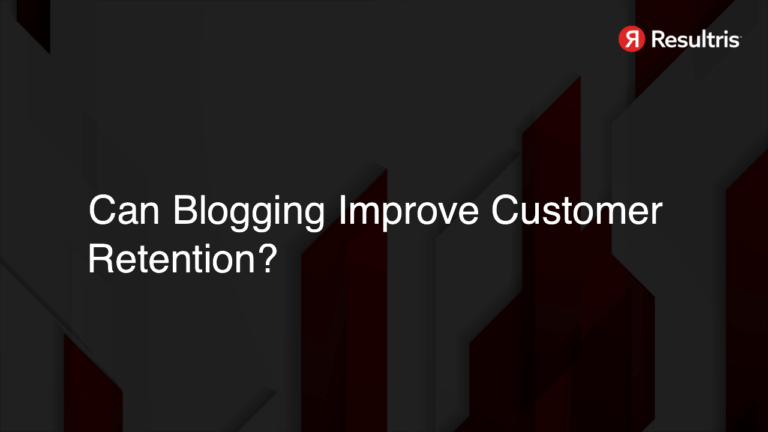

Yes, blogging can improve customer retention by providing valuable content that keeps customers engaged, educated, and informed about your brand, products, or services. Consistently updating your blog with fresh, relevant, and helpful content fosters loyalty and strengthens customer relationships, ultimately boosting retention rates.
Engaging and informative content is a powerful tool for building brand loyalty, which translates into improved customer retention. Publish articles that provide valuable insights, answer common questions, or showcase your products or services benefits. Knowing your audience is key to creating content that resonates with them and keeps them coming back for more.
Blogging not only demonstrates your brand’s knowledge in your industry but also positions you as a thought leader. Share expert advice, in-depth analyses and conduct interviews with prominent figures in your niche. This will increase credibility and trustworthiness, leading to higher retention rates.
Customer retention can be substantially improved by personalizing the user experience. Segment your audience and create content tailored to their needs, preferences, and interests. Addressing customers’ unique pain points and keeping a conversational tone helps foster a stronger bond between your brand and its audience, which ultimately aids retention.
Encourage readers to share their thoughts and opinions on your blog posts, and engage with them in the comments section. Respond to their queries and highlight any suggestions that can potentially enhance their experience with your brand. Additionally, sharing your blog posts on social media platforms enables open dialogue, contributing significantly to customer retention outcomes.
Developing an effective blogging strategy involves devising a consistent publishing schedule. Regularly updating your blog and sending email notifications keeps your audience engaged, informed, and anticipating your next post. Offering relevant information in tandem with promotional content, ensures readers continue to find value in remaining customers.
Utilizing blog analytics is essential to measure customer engagement and identify content that resonates with your audience. Analyze metrics like page views, time on page, and bounce rate to identify patterns and trends and adjust your content strategy accordingly. Catering to your customers’ preferences ensures they continue deriving value from your blog, thereby improving retention.
User-generated content (UGC) can positively impact customer retention. Encourage customers to contribute blog posts, share testimonials, or engage with your content through comments and social shares. This sense of participation fosters a sense of community and deepens brand attachment, further strengthening customer loyalty and retention.
Email marketing is an efficient way to remind customers of your blog’s existence and entice them to return. Create an email subscription list and regularly share updates and new content via newsletters. Make sure to offer a seamless process for customers to sign up, subscribe, and manage their preferences. Connect with your audience directly via their inbox, ensuring your content is consistently stayin top-of-mind.
Variety is the key to keeping customers engaged. Integrate multimedia content in your blog posts, such as images, videos, infographics, and podcasts, to entertain and educate your audience. Diversifying the content format improves the user experience and reduces the probability of readers losing interest, supporting customer retention goals.
If you have further questions about how blogging can improve customer retention, we’ve compiled this list of frequently asked questions to assist you. Get the answers to some common queries about blogging and its impact on retaining customers.
To maximize customer retention, we recommend updating your blog at least once or twice a week. A consistent publishing schedule keeps your audience engaged and anticipating your next post, strengthening their connection to your brand.
Focus on creating valuable, informative, and engaging content that resonates with your target audience. Share expert advice, industry insights, case studies, how-to guides, and interviews with thought leaders to demonstrate your credibility and foster loyalty among your customers.
Use analytics tools to track customer engagement on your blog, including the number of page views, time spent on the page, and bounce rate. Monitor changes in customer retention rates and compare them with your content publishing schedule and the type of content you share to identify direct correlations.
Create an email subscription list for your blog and regularly send updates, newsletters, and new content to your subscribers. Use personalized email campaigns to keep both your blog and your brand top-of-mind, driving customer loyalty and retention.
Encourage your customers to share their own experiences, articles, testimonials, and comments on your blog. You can also create specific blog topics or discussion forums around user-generated content to foster a community atmosphere, which can contribute to improved loyalty and customer retention.




